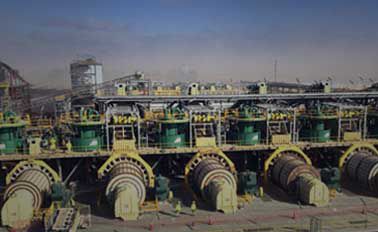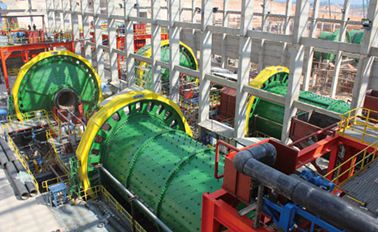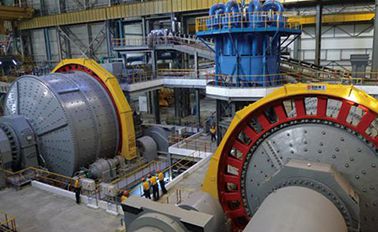1 Introduction
As a new type of all-solid-state gyroscope, fiber optic gyroscopes (FOGs) are characterized by their fast startup, wide measurement range, and high reliability. The XY-FOG50 single-axis medium-low precision fiber optic gyroscope is suitable for the application requirements of medium-high precision inertial navigation systems, such as land-based positioning and orientation, vehicle-mounted north-finding instruments, airborne attitude and heading reference systems, and marine gyrocompasses.
1.1 Scope of Application
This manual applies only to the XY-FOG50 product and includes performance specifications, technical conditions, dimensions, and installation and usage instructions. The technical conditions cover the environmental range, electrical performance, and physical characteristics of the product.
1.2 Main Parameters
1.2.1 Main Performance Specifications of the Fiber Optic Gyroscope
Table 1 Main Performance Specifications of the Product
| Parameter | Type A | Type B | Type C | |
| Zero Bias Stability °/hr (1σ, 10s) | ≤0.30 | ≤0.20 | ≤0.10 | |
| Stabilization Time (s) | <10 | <10 | <10 | |
| Zero Bias Repeatability °/hr (1σ) | ≤0.30 | ≤0.20 | ≤0.10 | |
| Full-Temperature Zero Bias Repeatability °/hr | ≤1 | ≤0.5 | ≤0.3 | |
| Random Walk Coefficient °/[pic] | ≤0.02 | ≤0.02 | ≤0.01 | |
| Scale Factor Nonlinearity ppm (1σ) | ≤100 | ≤50 | ≤50 | |
| Scale Factor Repeatability ppm (1σ) | ≤100 | ≤50 | ≤50 | |
| Dynamic Range | ±500°/s | |||
| Magnetic Field Sensitivity | ≤0.10°/hr/Gs | |||
| Operating Temperature | -40℃ to +70℃ | Optional (-45℃ to +70℃) | ||
| Storage Temperature | -50℃ to +70℃ | |||
| Vibration Conditions | 4.2g, 20Hz to 2000Hz | |||
1.2.2 Mechanical Testing
1.2.2.1 Sine Sweep Vibration
The gyroscope is mounted on a vibration table via a fixture in the direction of vibration. The gyroscope undergoes sine sweep vibration in three directions, corresponding to the X, Y, and Z axes. The vibration procedure includes: energizing the vibration table, powering on the gyroscope, preheating for a certain period (gyroscope startup time), and then recording the gyroscope output for approximately 5 minutes. The sine vibration conditions are: 20Hz to 2000Hz, with a scan time of 5 minutes and an amplitude of 4.2g. The gyroscope output is recorded during the vibration process.
Random Vibration
- Vibration Frequency: 20Hz to 2000Hz
- Vibration Time: 5 minutes per axis
- Vibration Directions: X, Y, Z axes
- Vibration Spectrum: See Figure 1

Figure 1 Vibration Spectrum
Requirements:
- The fiber optic gyroscope should exhibit no resonance during sine sweep vibration from 20Hz to 2000Hz.
- Random Vibration: The absolute value of the zero bias during vibration should be less than 0.3°/h compared to the average zero bias before and after vibration.
1.2.2.2 Mechanical Shock Testing as per Table 2
Table 2 Shock Test Conditions
| Peak Acceleration (g) | 30 |
| Duration (ms) | 10 |
| Number of Shocks | 3 per direction |
| Waveform | Half-sine wave |
| Directions | X, Y, Z |
| Note: Interval between shocks should be no less than 1.5s | |
During the shock test, the product is powered on. After completing the mechanical shock test, the product should function normally, and the change in zero position before and after the shock should be less than 0.2°/h.
2 Communication Protocol
2.1 Fiber Optic Gyroscope Communication Protocol
RS-422 Mode (Bidirectional)
- Bidirectional serial communication, compliant with the RS-422 interface standard.
- External trigger signal, 1000Hz square wave.
- The gyroscope begins to transmit data upon detecting the falling edge of the external trigger signal.
- The effective data of the gyroscope is 32 bits.
- The effective data of the temperature is 14 bits.
- The data transmission rate is 460.8kbps.
- Data format:
- Data transmission format: Each frame consists of 11 bits, including: the 1st bit as the start bit (0), bits 2 to 9 as the data bits, the 10th bit as the even parity bit, and the 11th bit as the stop bit.
- Parity method: Even parity.
- The effective data of the gyroscope is 32 bits (the most significant bit is the sign bit, 0 for “+” and 1 for “-”), and the effective data of the temperature is 14 bits (the most significant bit is the sign bit, 0 for “+” and 1 for “-”).
- Data packet format: Each transmission includes 10 bytes, where:
- Byte 1: Frame header (80H)
- Byte 2: First byte of gyroscope data (low byte)
- Byte 3: Second byte of gyroscope data
- Byte 4: Third byte of gyroscope data
- Byte 5: Fourth byte of gyroscope data
- Byte 6: Fifth byte of gyroscope data (high byte)
- Byte 7: Checksum for the first 5 bytes (gyroscope data) using XOR
- Byte 8: Temperature data low byte
- Byte 9: Temperature data high byte
- Byte 10: Checksum for the first 8 bytes (gyroscope data) using XOR e) Data storage method:

Figure 2 Dimensions of XY-FOG50
The fiber optic gyroscope has an external J30-15ZK connector, with the pin definitions shown in Table 1.
Table 1 Electrical Characteristics of Gyroscope Output Connector
| Pin Number | Pin Definition | Marking | Color |
| 1 | Serial T+ | TX+ | Yellow |
| 2 | Serial T- | TX- | Orange |
| 3 | Serial R+ | RX+ | Blue |
| 4 | Serial R- | RX- | Green |
| 5, 13 | Power +5V | +5V | Red |
| 6, 7 | Power Ground | GND | Black |






